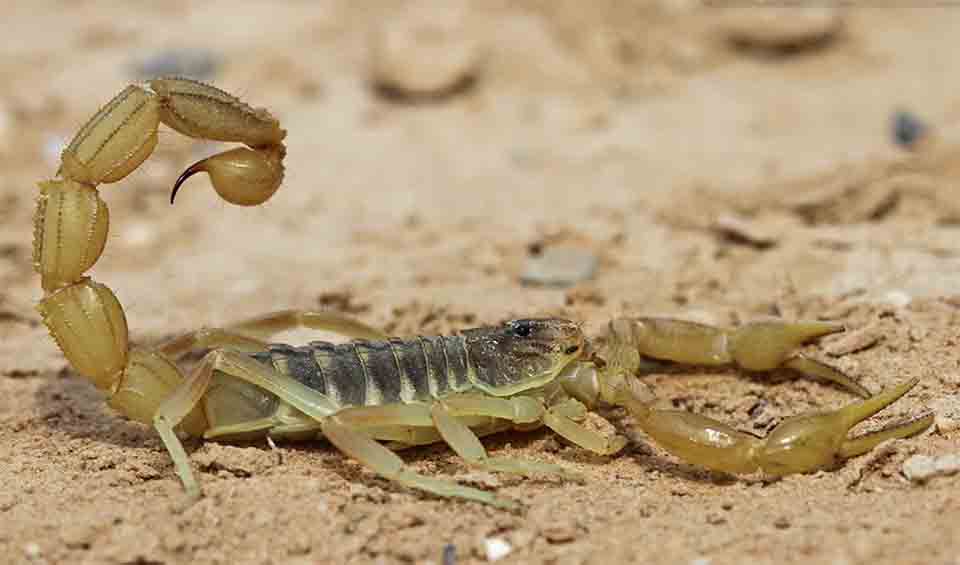Scorpiones – Scorpions
The disappearing spider cousins are mostly harmless
Turning a stone can be a fascinating experience, if you are lucky enough to find them! Scorpions, known for seeking daytime shelter in burrows or beneath rocks to escape extreme temperatures. These are often associated with arid or semi-arid environments like deserts, but they can also be found in a range of habitats, including grasslands, scrublands, and forests.
Their unique body consists of a cephalothorax and abdomen, the latter of which is separated into two sections—the pre-abdomen and the post-abdomen—that contain the stinger, or telson. The telson, loaded with venom glands at the end of the tail, serves as the scorpion’s dual-purpose tool—for hunting prey and warning off potential threats.
They are active during the night and have specialized sensors on their exoskeleton to detect vibrations and locate potential food sources (prey).
Scorpions glow because of fluorescent substances like beta-carboline in their cuticles, which are especially visible in UV light. This luminosity, which frequently has a vivid blue-green color. It’s unclear exactly what this fluorescence’s biological function is and why only few species developed it.
Due to their sensitivity to environmental changes, scorpions can serve as indicators of ecosystem health. Their presence or absence can reflect habitat conditions.

